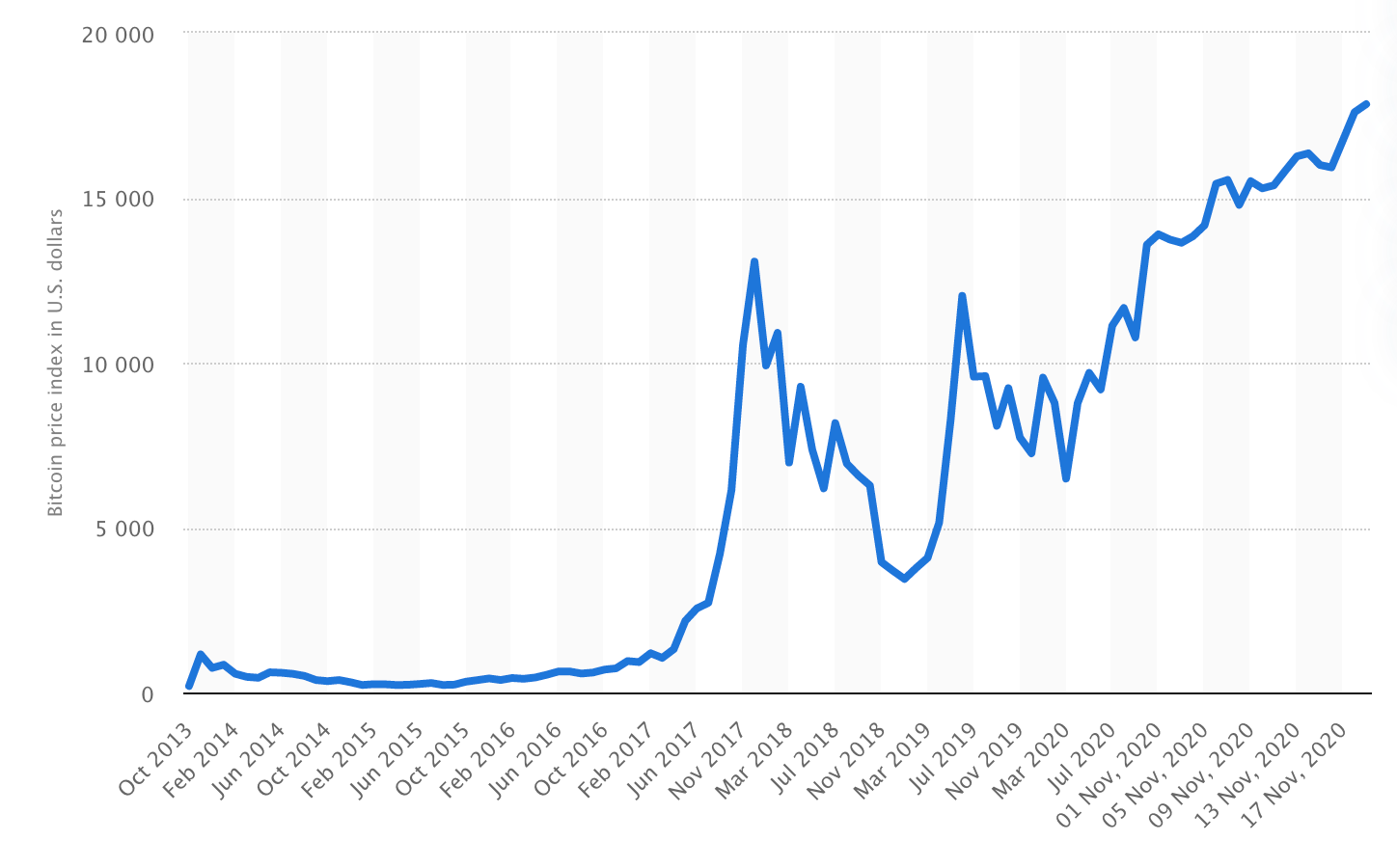Cryptocurrency is still a mystery to many but it is becoming more and more popular with each day. Bitcoin has recently crossed the 17,000 dollars mark. Therefore, against the background of the current growth of the cryptocurrency, we decided to share with you interesting facts about how the first cryptocurrency was born.
First mentions and creation
Satoshi Nakamoto, the unknown inventor of Bitcoin, the first and still the most important cryptocurrency, never set out to invent a currency. In his Bitcoin announcement in late 2008, Satoshi said he had developed a “Peer-to-Peer Electronic Money System.”
The original type of cryptocurrency was called bitcoins. It first hit the market in 2009 and has skyrocketed in popularity since then. It is the most widely recognized form of cryptocurrency and as such it is also the most commonly accepted by people and companies around the world.
After Bitcoin became the first cryptocurrency, solutions had to be found in order to trade it. In March 2010, the first cryptocurrency exchange called bitcoinmarket.com (now defunct) appeared. In July of the same year, Mt.Gox was launched.
| Fun fact:The total number of bitcoins after all the coins are mined is 21 million, with the last unit estimated to be mined in 2140. In fact, over 80% of the 21 million bitcoins have already been mined.
The first cryptocurrencies. What were they like?
From 2011 to 2013, Bitcoin managed to reach parity with the US dollar in February. During this year, several competing cryptocurrencies emerged: by May 2013, the cryptocurrency market had 10 digital assets, including Litecoin. In August, it was joined by another large crypto asset called XRP (Ripple).
| Fun fact:With all the alternative cryptocurrencies (known as altcoins), creators have to think outside the box when it comes to names that grab attention. That’s why we have weird-sounding ones like PizzaCoin, Cabbage, DogeCoin (named after an internet meme) and Coinye (named after Kanye West).
On July 30, 2015, the Ethereum network was launched. It is currently the second crypto asset in terms of market cap and has brought smart contracts to the cryptocurrency world.
Ethereum is the second most popular and valued cryptocurrency after Bitcoin with a market cap of 17.1 billion dollars. Ethereum was proposed by cryptocurrency researcher and programmer Vitaly Buterin at the end of 2013. Buterin was only 19 years old at that time.
Since then, the world of cryptocurrencies has not stood still. In January 2018, prices hit an all-time high in bitcoin history, and many new crypto assets have joined since then, including EOS (July 2017), Tron (September 2017), and Cardano (October 2017). The cryptocurrency market currently has over 2000 digital currencies and continues to expand.
How has the attitude of the world community changed?
With the advent of cryptocurrencies, many people were very skeptical about the new asset.
Bitcoin was born out of the 2009 global financial crisis. Against the backdrop of bank failures, cryptocurrency has gradually and imperceptibly entered the financial turnover. Bitcoin was then ignored by everyone except for a small but growing group of idealists.
Ten years later, we are witnessing a new financial crisis with more rescue operations, historically low interest rates, and an increase in government debt through additional issuance of fiat currencies.
Both individuals and companies are becoming increasingly aware of Bitcoin’s unique value proposition and its place in this macro environment.
Earlier this year, prominent macro investor Paul Tudor Jones said that bitcoin in 2020 reminds him of the role gold played in the 1970s. In a report titled The Great Monetary Inflation, he explains why his Tudor BVI fund invested between 1% and 2% of its assets in bitcoin futures contracts.
A group of the most influential central banks in Canada, Japan, Sweden and Switzerland, as well as the European Central Bank and the Bank for International Settlements, are going to create a commission to monitor the possibility of launching national cryptocurrencies in their jurisdictions. Meanwhile, the United States, South Korea, the United Kingdom and France are already launching new digital currency projects, while China is testing the digital yuan.
Summary. Cryptocurrencies have the potential to drive social and economic growth around the world, including in developing countries, by facilitating access to capital and financial services.
How did the value of Bitcoin change?
The virtual currency has had a fickle trading history since its inception in 2009, after which the price of one bitcoin has remained at roughly the same value level for several years.


The first price increase occurred in 2013, when one bitcoin traded at about 1124 dollars in November. Four years later, bitcoin experienced explosive growth and reached a record high, with some exchanges trading at roughly 20 000 dollars per bitcoin at the end of 2017. However, it has fluctuated quite a bit since then, averaging around 7000 dollars as of April 2020.
In the third quarter of 2020, there were about 18.5 million bitcoins in circulation worldwide, and the market capitalization of bitcoins was approximately 200 billion dollars. Thus, at the beginning of November 2020, the average price of one bitcoin was approximately 15 500 dollars. Today, the value of bitcoin exceeds 16 000 dollars.



















